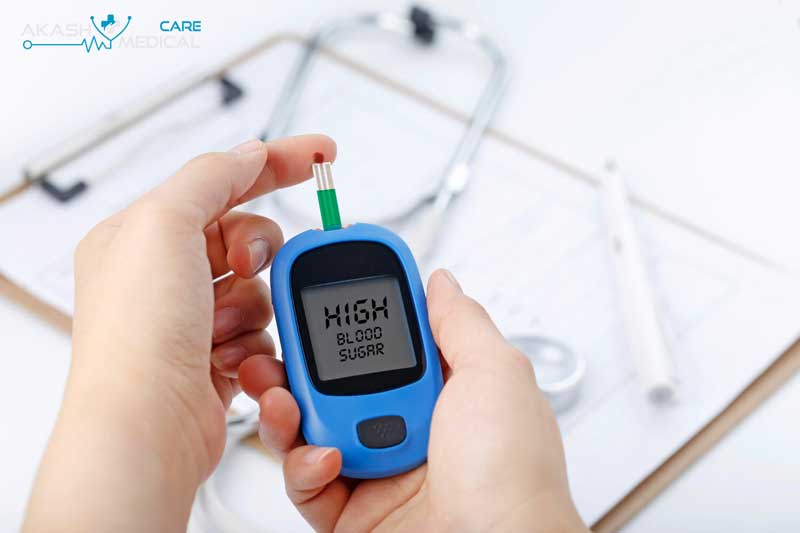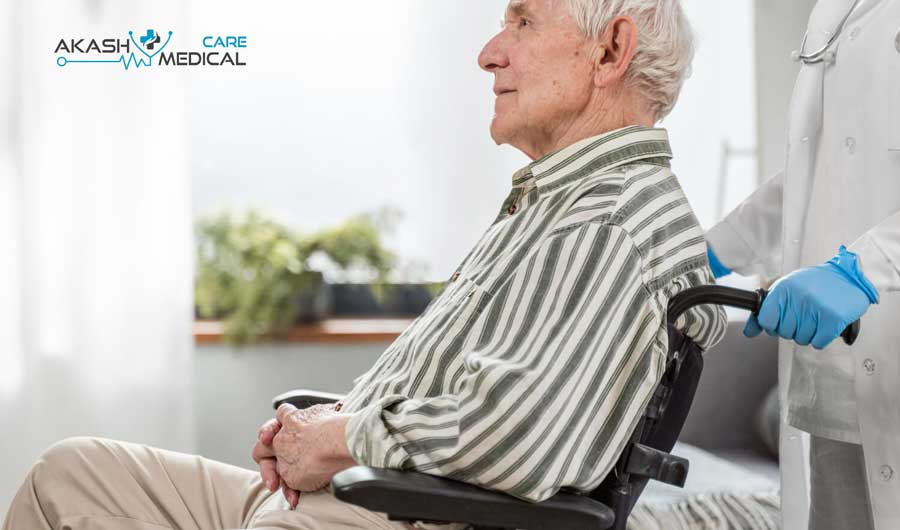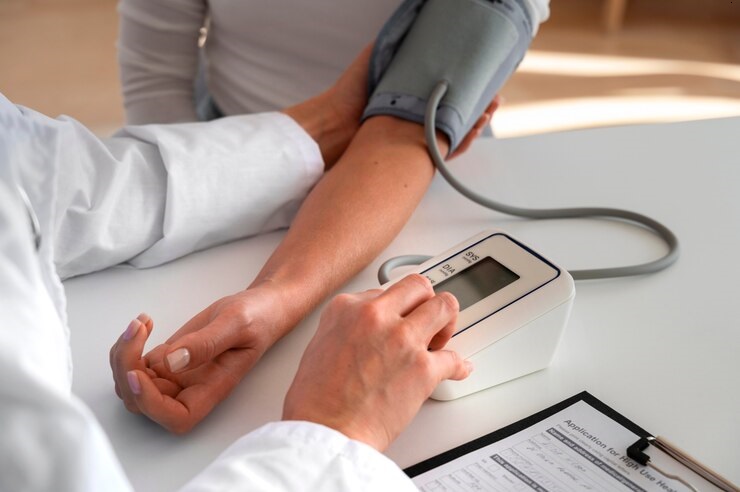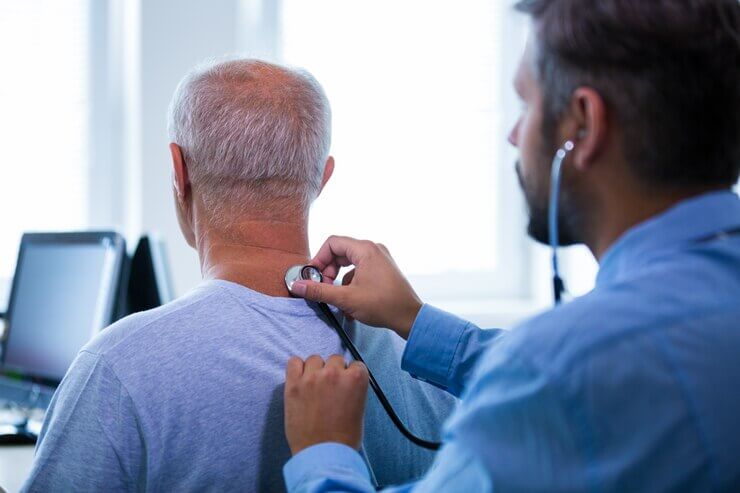Pain Management
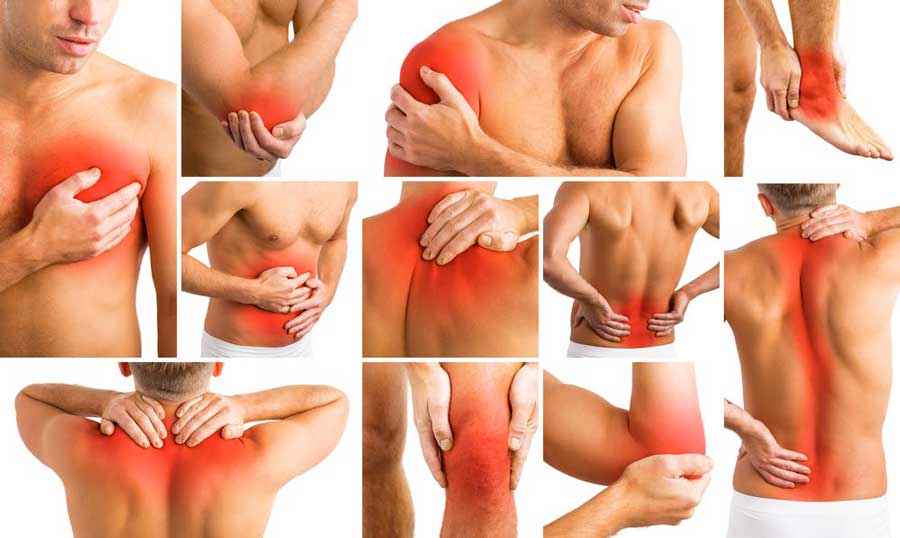
Pain management is a medical care service that emphasizes minimizing and relieving pain. The main purpose of pain management is to enhance the standard of life using multiple strategies and procedures. Pain management involves a blend of medical, physical, psychological, and rehabilitative approaches to figure out the pain and its influence on the individual’s overall health.
Primary care physicians who are experts in pain management diagnose the source of the pain and provide comprehensive care to their patients according to their needs. Physical therapy, certain physical exercises, psychological counseling to accept the condition, interventional procedures, and other methods are applied to manage the pain.
To manage your pain, first of all, you and your primary care physician need to understand the nature and character of your pain. The experience of pain is complicated. It involves complex sensory and emotional experiences. These experiences are influenced by various elements. They can be physical, psychological, and emotional. The sense organs sense these pains as a signal and carry the cue to the brain. It makes us understand that something is wrong and actions are required to reduce the pain.
Pain is not a disease alone. It is the outcome of other underlying problems in the body. We experience pain in many ways at different ages of our lives. Responsiveness to the pains differs from person to person. We should stay updated with our primary care physicians so that they can understand our physical condition and manage our pain according to that. Pain can be minor or major but it is very crucial to manage it efficiently.
Pain is an unavoidable experience in the human body and mind. It can be managed and treated properly for a better life. There are two types of pain. Acute pain is short-term pain. Acute pain can be treated and healed. Another one is chronic pain. Chronic pain is long-lasting continuous pain that needs continuous management and therapy. It might not be healed permanently but it can be managed successfully to make our life easier. The experience of pain is individual. It differs from person to person. So, pain requires a personalized treatment plan for every individual. It is important to locate the pain that might be caused by major or minor injuries and surgeries. These types of pains are termed as acute pain. If proper treatment and therapy are maintained, the pain will be healed permanently. Chronic pains such as neuropathic pain, persistent back pain, or arthritis require long-term management. Proper care with various treatment approaches improves the patient’s daily life and gives them the capacity to function as a normal person. These treatment approaches are dependent on the patient’s ability to cope with the pain management plan.
The Necessity of Pain
Can we think of a life without pain –where there is no feeling of pain, no aching, burning, or joint pain? It might sound great but practically it is not. Some people don't feel pain from the time of their birth. As they cannot feel any pain, they don’t recognize any underlying health condition happening in their body. As a result, they don’t get treated and tend to die earlier. To survive, we must feel the sensation of pain. So pain seems to be a blessing in our life. Pain protects us.
Why Do You Feel Pain?
Feeling the pain is very important because it is an indication that it needs attention to resolve it immediately. When your nervous system senses any damage in your tissue it gives signals to the brain cells which is the feeling of pain. The feeling of physical pain depends on complex factors which is an individualized experience.
Nociceptor nerve endings sense and react to hurting stimulation or possible tissue injury. When triggered, these receptors circulate all over the body and convey information to the brain. Physiological factors like inflammation in the body or nervous system can sense the signals of simulations and amplify the feeling of pain. Hormone plays a role in the sensation of pain. People who have various hormonal imbalances feel pain differently than others. The pain management doctors in NY who are your
primary health physicians can evaluate, diagnose, and treat your acute, chronic, neuropathic, nociceptive, and radicular pain.
Pain is a complex and subjective phenomenon. It is a basic feature of human existence. Pain might be experienced in diverse patterns. Every pattern has unique challenges for the patient and the physician. Every type of pain has its complex characteristics, source, treatment, and management.
Acute Pain
The simplest way to explain acute pain is that it is not a permanent pain and it can be healed if treated properly and timely. The body’s instant response to any sudden injury or illness is considered as the warning signal. The duration of acute pain can be from one minute to six months depending on the medical condition. Acute pain can turn into chronic pain due to a lack of treatments. The reflex of acute pain is the survival mechanism of living beings. The regular normal rhythm of life is disrupted due to acute pain.
Chronic Pain
Chronic pain is a long-lasting pain. Chronic pain can be continuous or it may be felt in specific circumstances. Some acute pains can turn into chronic pain if they are left untreated and do not heal properly. If a pain lasts more than the expected time of its healing time, it turns into chronic pain. Chronic headaches can be an example of this. Migraine or sinus pain can be triggered by many factors such as weather, temperature, lights, sounds, etc. Sometimes chronic pains are associated with some emotional and psychological components. Chronic pain hampers our daily life and it needs a proper and well-structured treatment plan. A treatment plan can be a combination of physical, psychological, and emotional. These management plans are effective for chronic pain management. Medication, exercise, physical therapy, psychological therapy, and community care are important to manage the chronic pain of patients.
Neuropathic Pain
Neuropathic pain happens in the nervous system. Injury or any fault in the nervous system is responsible for this. The feeling of neuropathic pain can resemble the pain of burning or tingling. Diabetes, stroke, or cancer and their tricky treatments like radiation, chemotherapy, and surgery are responsible for neuropathic pain. The sensation of neuropathic pain is not like acute pain. The pain feels very extreme and intense, sometimes referred to as burning or shooting. Traditional pain management methods are not always successful in treating neuropathic pain. It requires long-term treatment like chronic pains. Medicines that regulate nerve signals are used to treat neuropathic pain. Bringing balance to lifestyle and physical therapy helps to ease the pain. If the nature of the pain is understood, pain management becomes effective.
Nociceptive Pain
Nociceptive pain is caused by the activation of receptors for pain (nociceptors) in response to damage to tissue or inflammation. They are the consequences of the triggering of specific nerve endings which locate any possible tissue damage. It is frequently described as sharp, miserable, or severe discomfort. Cuts, burns, and fractures can be examples of nociceptive pain.
Management of nociceptive pain is detecting the hidden reason and prescribing medications like anti-inflammatory or non-steroidal. Nociceptive pain is the indication of the body’s self-protecting mechanism and its interaction with pain.
Radicular Pain
Another term for radicular pain is radiculopathy. It happens when nerve roots are compressed or irritated. It mostly happens in the spinal region. Radicular pain is the feeling which radiates around the affected nerves. It causes numbness, tingling, or weakness. Careful diagnosis of nerves is required for radicular pain. Treatment includes physical therapy, which locates the nerve compression and the symptoms.
Inflammatory Pain
Inflammatory pain happens due to the injury or infection and its response to the immune system. When the body’s immune system releases inflammatory substances, it results in inflammatory pain. Fever, fatigue, chest pain, and abdominal pains are common examples of inflammatory pain. This pain is part of the body’s natural defense mechanism to protect the body from any potential harm or damage.
Psychogenic Pain
Sometimes we go through many psychological problems. When the origin of pain is not physical but psychological, those pains are referred to as psychogenic pains. Psychological features, like emotions, reactions, and thought processes, are responsible for psychogenic pain. Physical features or complications are not involved here. But the pain is felt physically. Stress, anxiety, and depression are mostly responsible for psychotic pain. Psychotic pain such as headache, stomach pain, and back pain occurs due to these events. We all know a healthy mind dwells in a healthy body. Physical pain and psychogenic pain are interdependent. Taking care of mental health helps to improve physical health. The same thing goes for physical health. If we take care of our physical pain, our mental health stays safe and sound. Psychogenic pain is not always about thought processes and these are not imaginary. Sometimes malfunction in the psychological factor such as any nerve or tissue damage plays a role in such pain.
Versatile treatment approaches are needed to treat psychogenic pain. The treatment involves both physical and mental approaches. Therapy for mental health improvements, behavioral therapy such as sharing ideas about how to cope with, accept, and manage the pain, some drugs, and alternative therapies for example yoga, mindfulness, meditation, acupressure, etc. The treatments for psychogenic pain are the most effective when it is done from a compassionate point of view.
Visceral Pain
Visceral pains happen in the internal organs of the body. Kidney stones, or any damage of the abdomen, chest, stomach, liver, intestine, or bladder cause visceral pain. Visceral pain claims to be very intense, and ambiguous, and the origin of the pain is complex at times. Visceral pain can be felt as referred pain. The pain might be felt somewhere else other than the origin of the actual pain. Pain in any internal sources can be felt in the shoulder or back sometimes.
The feeling of visceral pain is not as sharp as other injuries that cause somatic pains. Visceral pain can result in autonomic nervous reactions that can cause sweating, nausea, fatigue, irregular heartbeats, and other body responses. Tenderness, changes in the structure of organs, or cramps in the organs can be linked to visceral pains. Thorough and personalized medical care is needed to treat visceral pain. A blend of screening, physical diagnosis, history of previous medical conditions, and invasive procedures are used to identify and treat visceral pain. Medicines, a balanced lifestyle, psychological counseling, and surgeries are some ways to treat visceral pain. Visceral pain is managed by identifying the actual reason behind the pain and diminishing the related symptoms.
Referred Pain
When the pain originates in one area the pain is felt in the other part of the body. Injury or damage in the liver can produce pain in the neck or shoulder area. Referred pain happens due to the common pathways of the nerve endings of the body that send signals to the brain. For that reason our brain decodes the signals ambiguously. As a result, we feel the sensation of the pain somewhere else, rather than the actual source of pain. Referred pain creates a confusing situation for patients and healthcare providers to identify and manage pain.
Cancer Pain
Cancer pain management stands to improve the quality of life of cancer patients. Cancer pain happens due to cancer. Also, the treatment and other factors that are related to cancer cause pain. Cancer pain management is an individualized treatment. It usually depends on the severity of the cancer. Treatments, the cause behind the disease, the patient's mental and physical health, etc. are involved too. When the cancer treatment is done, patients need a normal life. Cancer pain management aims to allow the patient to function as a normal person as much as possible.
Idiopathic Pain
The origin of pain remains unknown and the treatment becomes very tough. Patients and doctors go through a lot of complex diagnosis processes but still, the source of the pain stays unknown.
Facial Pain and Headache
Facial pain and headache can be the worst feeling one can experience. Head pain can be acute or chronic and it happens due to various factors. Facial pain, also known as trigeminal nerve pain treatment, occurs due to any compression caused by blood vessels. Sudden sharp pain in the face that lasts from a few seconds to two minutes can be defined as trigeminal nerve pain.
Headaches and pain on the face can happen due to several reasons and their symptoms and patterns are keenly observed to identify the underlying conditions.
Various headaches originate from the different parts of the head and face. Among them, tension headaches are the most common. It felt like a steady and mild ache on two sides of the head. It also affects facial parts like the forehead, neck, temples, and back of the head.
Migraine pain is another most common headache people experience all over the world. It's an intense throbbing pain that is followed by other symptoms like nausea, photophobia, blurry vision, etc. We also experience facial pain because of migraine pain. It causes pain or pressure on the forehead, eyebrows, etc.
Cluster headaches involve severe headaches around the head which move in cyclical patterns.
Extremely sharp pain that is focused around the eye is the symptom of cluster pain. Cluster headaches are severe, stabbing pain, and make the eyes red and watery.
Back pain, which can also be referred to as spine pain happens due to mechanical or structural damages in the spine, disc, muscles, ligaments, or if the nerves in the back get compressed.
Back pain cannot be relieved at home. It needs the guidance of a specialist doctor. Spine pain management service includes neck pain treatment, cervical pain treatment, upper back pain treatment, lower back pain treatment, hip pain treatments, and tailbone pain treatment.
Leg and Knee Pain
Pain in the leg can damage your lifestyle and hamper your daily life. Leg pain management service includes joint pain treatment, pain management for sciatica, sacroiliac (SI) joint pain treatment, etc. Knee pain is mainly knee joint pain. Knee pain treatment requires a both-way treatment which is a combination of medication and exercises. Leg and knee pain can happen because of injuries, physical problems, or structural issues. Primary care physicians will diagnose the underlying medical issues– location of the pain, nature of the pain, and triggers of the pain and treat you according to that.
Hands, Arms, and Shoulder Pain
If your hands feel pain, it hampers your daily life. Shoulder pain and elbow pain can reduce your efficiency in working for your living. Talk to your physician for your shoulder pain treatment, shoulder blade pain relief, wrist pain treatment, elbow and elbow joint pain treatment, rotator cuff pain treatment, etc. Sometimes it feels like dull aches which can be persistent. Osteoarthritis or overuse injuries can cause such conditions. Sharp or shooting pain can be a clear indication of compression or injury in the nerve. Numbness in the hands and arms can be an indication of carpal tunnel syndrome, peripheral neuropathy, or cervical radiculopathy. Inflammation in tendons causes increased blood flow to the affected area and feels like a palpitating sensation.
Frozen shoulders or osteoarthritis causes stiffness in muscles, joints of arms, and shoulders. Movement becomes tough because of conditions like this.
Nerve-related problems may give a burning sensation to the hand or arms. This is called peripheral neuropathy or nerve compression syndrome.
Rotator cuff injury results in weakness in arms which accompanies pain which involves nerves or muscles.
If you still feel pain when you are resting, it might indicate chronic pain in your hands or arms. Nerve-related disorders, rheumatoid arthritis, or osteoarthritis are common conditions behind this.
The feeling of pain differs from person to person and it is very subjective. Explanation of pain by people is subjective. Comprehensive evaluation by healthcare professionals will detect the source of the pain and plan the appropriate management of it.
Therapy for your pain
Various types of approaches are applied to manage pain. Therapy for pain involves different initiatives to manage pain for the patients who are suffering.
To function properly in day-to-day life, movement, and achieving strength by doing proper exercises help effectively. Repetitive motion injury, osteoarthritis, or recovering stages after surgeries get better by applying physical therapies.
People who need help from others for daily activities might be self-independent again after occupational therapy is applied. People who are suffering mostly from chronic pain can learn adaptive techniques and learn how to make their daily lives more manageable.
Psychotherapy can be very effective for people to make them understand the relationship between their pain and their thought process, feeling of pain, and reaction towards the pain. Counseling and psychotherapies help them eliminate their negative thinking about pain and teach them some coping mechanisms to manage their pain.
Mindfulness-based stress reduction or MBSR is a kind of meditation that encourages the patients to focus on the present. As a result, they can achieve some relaxation and relieve some stress.
Massages help to manipulate the muscles and soft tissues to eliminate tension, increase blood circulation, and improve relaxation. Motion injuries and chronic pain get better by massage therapy.
Acupuncture originates from China. It is an ancient Chinese practice that includes inserting a thin needle into a specific point of the body. It is believed that it simulates the body’s natural healing power. It is used to treat any acute or chronic conditions of the body.
Pain relievers, tranquilizers, and other other medications can help in pain management. Medicines help to reduce inflammation and help to manage pain.
Inserting nerve-blocking medications by injecting medicines is an example of Interventional Procedures.
Therapy for pain depends on the patient’s preferences as well as the healthcare professional’s recommendations. A combination of both helps to get an expected result for pain management.
Long-term management of pain involves follow-ups with healthcare doctors for pain care, assessing the ongoing treatment and management. This finds out the needs and improvements of the pains.
Regular periodic follow-ups are needed to evaluate the impact of the current pain management plan. As a result, the patient gets the opportunity to consult the doctor regularly and get the chance to understand any developments, or if any change is needed the doctor can do that according to the preferences of the patient.
By monitoring the patient regularly, doctors can understand the intensity, current status, and the effect of pain on daily life. The outcome includes subjective experiences, objective measures, and comprehensive treatment strategies.
Regular follow-ups indicate the effectiveness and the doses of medications. Doctors will re-adjust the drugs based on the pain, side effects of medicine, and the achievements of pain management. Any unexpected crisis can be managed with a crisis management plan. It helps to address any unexpected challenges or any inflammation of pain.
Communicating with the patient helps to maintain a healthy and trusted relationship with the patient and their family. As a result, the patients get engaged in treatment plans, develop self-care, and nurture a long-lasting therapy plan. Long-term pain management involves multidimensional and adaptable approaches to optimize pain.





